A snood for a boy is the ideal product to learn to knit. It can be made using knitting needles and a hook. Options for simple and easy-to-create models with a step-by-step description of knitting are presented further in the article.
How to choose the right yarn and knitting needles for knitting snoods for boys?
Children's things, in addition to being beautiful and comfortable, must meet safety requirements.
Therefore, knitting threads should be selected taking into account the following characteristics:
- The composition of the material should not cause skin irritation. The yarn should not be chemically treated and should not be prickly.
- The dyes used must be natural, permanent and hypoallergenic.
- The fibers should help retain heat and remove excess moisture.
- Knitted items should not deform, shrink or fade.
- The yarn must have increased wear resistance and not pill.
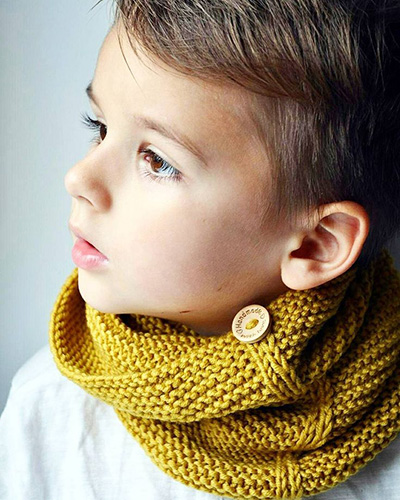
All the above characteristics are collected in special lines of yarn for children. Manufacturers put the prefix "baby" on the labels indicating the composition of the yarn, its density, and the sizes of the recommended knitting tools.
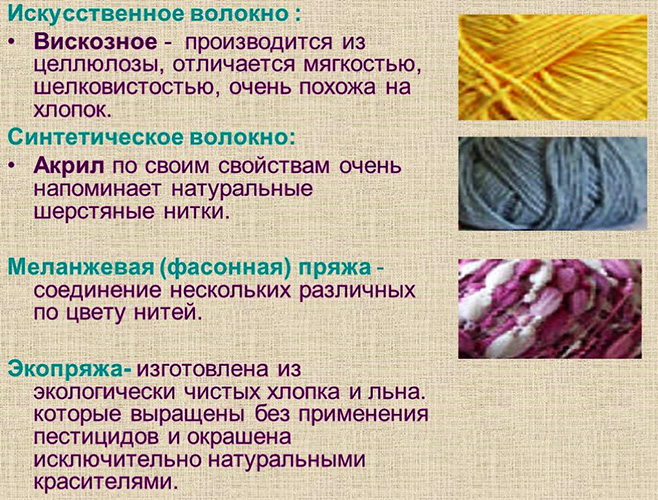
Among the children's assortment you can find:
- pure wool sheep, merino, angora yarn;
- semi-woolen threads with the addition of artificial fibers, which give elasticity and wear resistance to finished products;
- natural cotton, linen, bamboo, viscose threads;
- synthetic yarn made of acrylic, polyester, nylon, polyamide, which is particularly soft and retains heat.
Color selection
Parents often choose for their sons, starting from senior preschool age, things in subdued colors. For newborns and toddlers in nursery groups, bright shades and their combinations are suitable.
Current colors for knitting scarves for boys:
- black, blue-black;
- graphite, gray, light gray;
- olive, khaki;
- dark and bright shades of red, green, blue.
- purple, eggplant;
- dark yellow and orange.
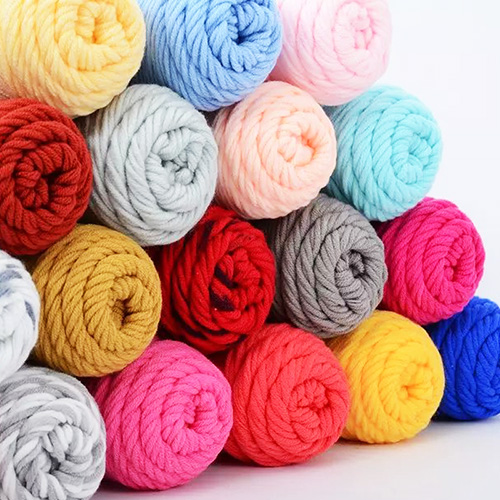
The chosen color of the snood should match the child's hat and outerwear. When knitting a set, the hat and scarf are often made in the same color and the same pattern.
Scarf size, yarn calculation
A snood is a knitted fabric closed in a ring. It can be worn in 1 or 2 turns. The size of the product is selected individually. To do this, you need to take measurements.
You can use a table with average sizes.
| Age | Snood size in 1 turn | The size of a snood is 2 turns |
| 3-5 years | width - 15 cm, length - 40 cm | width - 15 cm, length - 80 cm |
| 5-7 years | width - 18 cm, length - 45 cm | width - 15 cm, length - 100 cm |
| 7-10 years | width - 18 cm, length - 45-50 cm | width - 18 cm, length - 115 cm |
| 10-12 years | width - 20 cm, length - 50 cm | width - 20 cm, length - 125 cm |
To determine the length of the snood, you need to know the head circumference and the intended way of wearing. If it is important that the collar sits tightly, you need to measure the head circumference and subtract 2-5 cm. If you knit the product with an elastic pattern, the snood will not cause discomfort when putting it on over the head. It will sit tightly enough on the neck and protect from the wind.
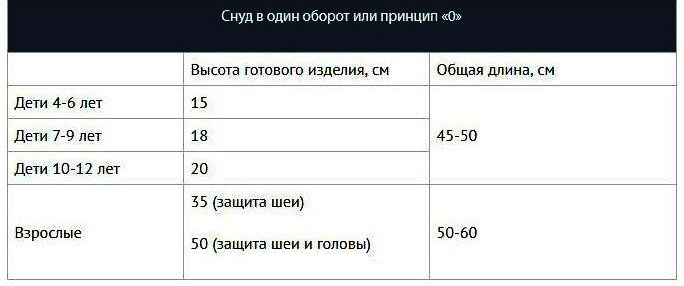
If you want to wear a snood loosely in two rows, it is recommended to take individual measurements. You can do this with a measuring tape or another long scarf.
To pre-calculate the yarn consumption for knitting, you need to know:
- thread thickness:
- spoke diameter;
- knitting density and pattern.
To accurately calculate the amount of material needed, you can do this:
- Knit a 5 x 5 cm sample using the intended yarn and the chosen pattern.
- Unravel the piece, measure the length of the thread and divide it by 25. The resulting number will show how much thread is needed per 1 sq. cm.
- Calculate the area of the snood.
- Multiply the length of thread that is spent on 1 sq. cm and multiply it by the area of the snood.
The consumption of bulky yarns for loose knitting will be less than the consumption of tightly twisted yarn. The consumption of yarn also depends on the pattern. Openwork requires less material than dense relief knitting.
For knitting, you need to know one more parameter. This is the number of loops that you need to cast on to knit a product of a certain width. To do this, you will need to knit a 10 x 10 cm square from the prepared yarn. When knitting, you need to use the same knitting needles and pattern that will be used to make the main product.
From the resulting sample, you can find out how many loops are included in 1 cm in length and height. These figures allow you to calculate the required number of loops. To do this, the length (in cm) is multiplied by the number of loops from the sample.
For example, you need to knit a scarf 20 cm wide. In the knitted sample, there are 4 loops per 1 cm. To get the required number of loops, you need to multiply 20 by 4. Thus, for the scarf you need to dial 80 loops.
Master class on knitting with straight and circular needles. Rice pattern
A snood for a boy can be knitted with straight or circular needles. However, the same pattern will be knitted differently. Only front rows are knitted on circular needles, and front and back rows are knitted on straight needles.
You can imagine how the sequence of rows changes using the example of knitting the "rice" pattern. The pattern rapport consists of 2 loops.
Circular knitting pattern diagram:
- In the 1st row the pattern consists of 1 front and 1 back loop.
- Row 2 repeats the pattern and also consists of 1 front and 1 back loop.
- In the 3rd row, a purl stitch is knitted over the front stitch, and a front stitch is knitted over the back stitch.
- Row 4 will repeat the pattern of the previous row.
To knit the rice pattern on straight knitting needles, you need:
- In the 1st row, knit a pattern of 1 front and 1 back loop.
- In the 2nd purl row, knit a purl stitch over the front stitch, and a front stitch over the back stitch.
- In the 3rd front row, knit all the stitches according to the pattern. Knit the front stitch as a front stitch, and the back stitch as a back stitch.
- In the 4th row, change the sequence and knit the front stitch with the back stitch, and the back stitch with the front stitch.
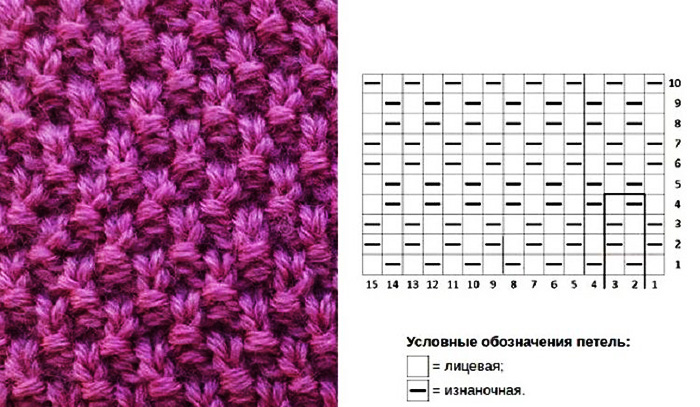
The "rice" pattern is very easy to make and is suitable for beginners. The snood pattern looks like a rectangle. When knitting, the first edge loop is simply removed, and the last one is knitted with a purl loop.
To knit a snood for a boy on straight knitting needles, you need:
- Cast on the required number of stitches. To make a piece using the rice pattern, you need to cast on an even number of stitches.
- Knit the fabric following the pattern diagram.
- Knit as many rows as necessary to get the desired length. To avoid mistakes, you can draw a rectangular piece on paper and apply the scarf to the drawing as you knit.
- Close the loops and fasten the thread.
- Using a needle and thread or a crochet hook, sew the edges of the scarf together to form a ring.
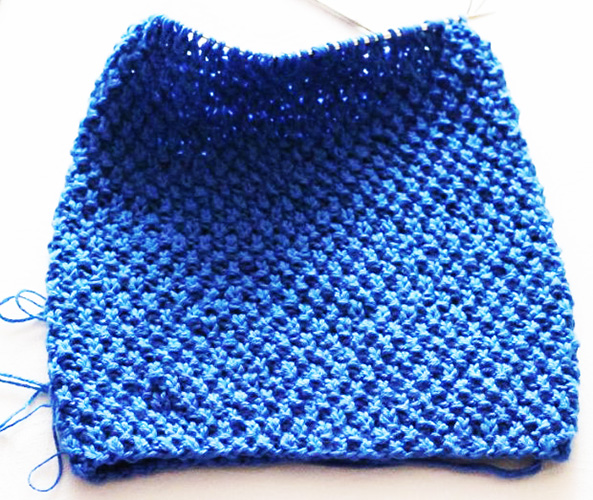
When using circular knitting needles, the scarf is knitted in the longitudinal direction. This means that when casting on stitches, you need to calculate their number based on the length of the product.
To knit a snood on circular needles you will need:
- Cast on the required number of even stitches 2.
- Knit with a rice pattern according to the diagram for circular knitting needles, the number of rows equal to the width of the product.
- Close the last row. When closing, you need to pull the loops a little so that the edge is elastic.
- Cut the thread and hide it with a hook between the walls of adjacent loops.
Beautiful models of snoods for a boy. Patterns, step-by-step description of knitting
A snood with knitting needles for a boy can be knitted using different patterns. Their patterns and knitting sequence are described below in the master classes.
Scarf with elastic at the edges for babies
A scarf with elastic at the edges resembles a sweater collar. It is convenient to wear under a jacket. Due to the elastic border made of elastic, the scarf fits the neck and keeps warm. For ease of dressing, you can make a model with buttons or snaps.
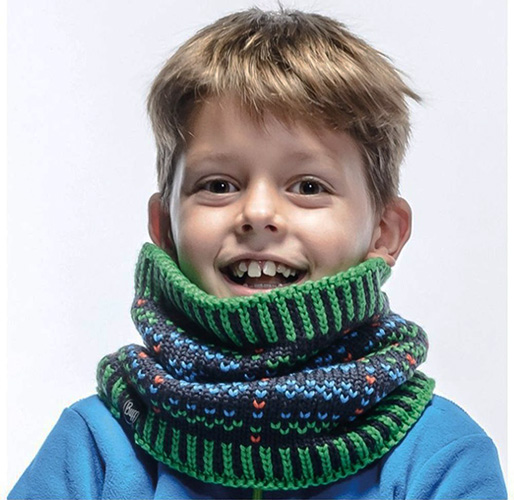
When knitting a one-piece collar, you need to measure the child's head and from the resulting value make a deduction for the fit from 3 to 5 cm.
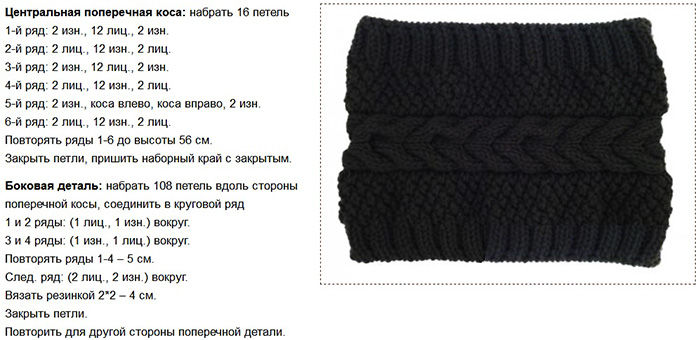
The work uses threads with a density of 100 g per 160 m and knitting needles No. 5 and 5.5 mm. The base of the scarf is made with any dense pattern. Beginners are better off choosing patterns that consist of alternating front and back loops or simple cables on the back surface.
To knit a scarf for a baby, you need:
- Cast on the required number of stitches using circular knitting needles No. 5.
- Knit 3 cm with a 1 x 1 elastic band.
- Switch to knitting needles No. 5.5 and knit with the main pattern for 9 cm.
- Change the knitting needles again to thinner ones and make a 3 cm elastic band.
- Close the loops, cut the thread and hide the end.
- Sew the edges of the collar.
Knitting a snood with a rice pattern on circular needles
The rice pattern can be used for the entire fabric of the product, or you can decorate the edges of the collar with a border of elastic or garter stitch. For knitting in 1 turn, you will need 1 skein of yarn with a density of 50 m per 50 g.
Knitting a snood should be done in the following sequence:
- For a collar that can be worn over a hood, you need to cast on 65 loops, and for a model for a jacket - 45 loops.
- Knit the required number of rows using the main pattern. If you want to get a double collar or a snood with draping, you should knit the product of the required width.
- In the last row, close the loops and hide the end of the thread.

If you want to decorate the scarf with a border, you need to subtract 3-5 cm from the total width of the product on each side and make them with a 1 by 1 elastic pattern.
Model with cord for a snug fit
This scarf resembles a sports accessory, the top of which is pulled together with a drawstring.
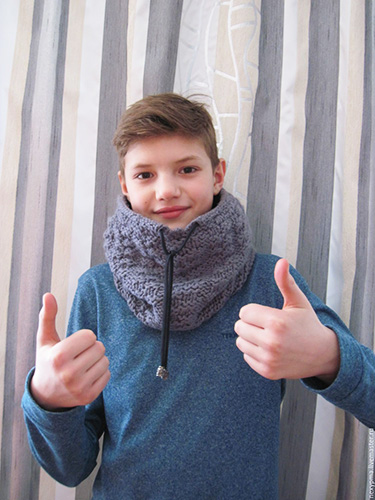
For the main pattern, you can use a waffle ornament. It is knitted on the basis of a 2 by 2 elastic band with transverse interceptions with a thread. The drawstring for the lace consists of a front surface. The lace itself can be crocheted, knitted, or use a ready-made store-bought version.
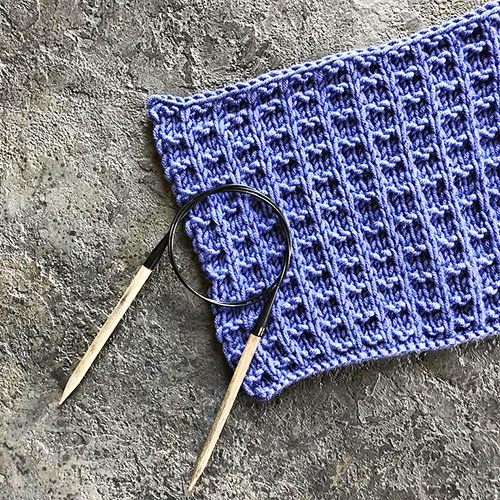
Pattern repeat diagram for 16 stitches:
- The first 4 rows should be knitted with a 2 by 2 elastic pattern. The row should be started with purl stitches.
- In the 5th row, you need to make a grab. To do this, knit the following sequence: make 2 purl loops, count the next 6 loops, insert the knitting needle from the front side and pick up the thread. Keeping the resulting loop on the knitting needle, knit the first of the 6 loops as a front loop and throw the jumper over it so that it encircles these 6 loops.
- Next you need to knit 1 front, 2 back, 2 front, 2 back and repeat the pattern with the jumper.
- After 4 rows, you need to make jumpers again, but arrange them in a checkerboard pattern in relation to the previous ones.
To knit a snood tube you need:

- Cast on the required number of stitches and knit with the basic pattern for 20 cm. For a head circumference of 52 cm, using 100 g yarn for 175 m, you will need to cast on 96 stitches and 1 stitch to close the circle.
- Proceed to knitting the drawstring. To do this, take smaller diameter knitting needles and knit 5 cm with the front surface. Close the loops.
- Fold the drawstring piece in half and sew the free edge to the snood fabric from the wrong side.
- Thread a cord through the drawstring.
Scarf with small pattern
It is better to choose smooth yarn for work. When knitting with such threads, the patterns look clear and textured. Thick natural or semi-woolen yarn is suitable for winter, and thinner threads are suitable for autumn.
To knit a scarf, you need to choose a suitable pattern and knitting needles of a suitable diameter. For optimal knitting density, choose knitting needles with a diameter 1 mm larger than the diameter of the thread.
To knit a snood scarf for a 5-year-old boy, you will need to make a sample and count the number of loops needed. The size of the fabric for the snood is 42 cm long and 19 cm wide. If you take yarn with a density of 100 g per 400 m and knit in 2 threads with knitting needles No. 3, you will need to dial 40 loops.
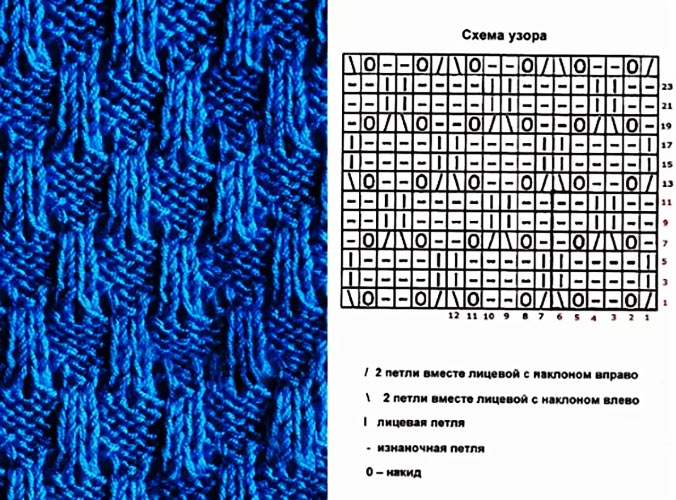
You don't need a pattern to knit a scarf. You just need to knit a rectangular piece using the chosen pattern. At the end of knitting, the loops should be closed and the ends of the collar should be connected with a hook.
English elastic band clamp for school age boys
English elastic is a textured and voluminous knitting. In this style, you can make a set with a hat. The elastic pattern is very simple, so knitting will not take much time. The product turns out soft and warm due to the volume obtained. This option can be used by beginner craftswomen who have already mastered the techniques of performing purl and face loops.
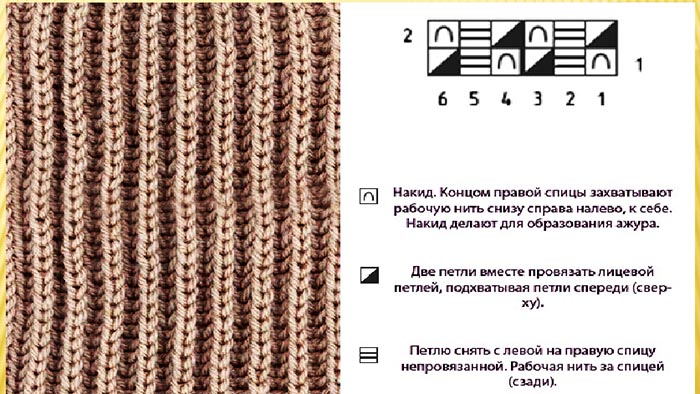
To make a snood for a teenager, you will need knitting needles No. 3.5 and 1 skein of yarn with the following characteristics:
- density 100 g per 200 m;
- composition – semi-wool;
- color – dark gray.
To knit English elastic with turning rows you need:
- In the 1st row, alternate 1 purl and 1 front loop.
- In the 2nd purl row, knit according to the pattern, but change the method of knitting the front loops. The knitting needle must be inserted into the loop of the previous row. Purl loops are knitted in the usual way.
- Continue knitting according to the pattern, knitting the front loops in the manner indicated.
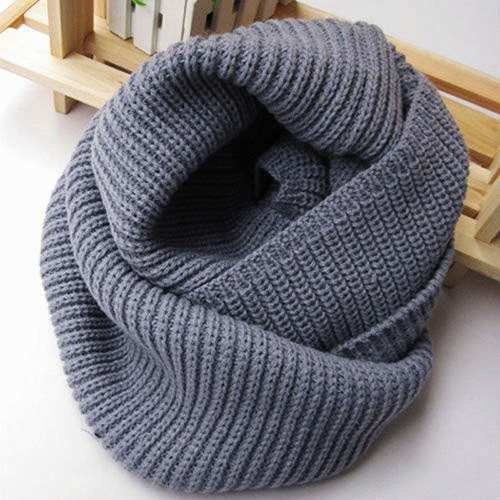
The approximate size of a snood piece for a teenager is 25 cm wide and 55 cm long. Beginners can knit a rectangular piece on straight needles and then sew it into a ring. Those who have mastered circular knitting can make a seamless piece.
Snood in 2 turns with geometric pattern
A simple version of the geometric pattern is the "checkerboard". It is knitted by alternating squares of the front and back surface. The pattern repeat consists of 10 loops.
You need to knit it like this:
- In the 1st row, knit 5 front loops and 5 back loops.
- In the purl row, repeat the pattern: knit the front loops as front loops, and knit the back loops as back loops.
- Repeat rows 1 and 2 2 more times.
- In the 7th row, knit all front loops as purl, and all back loops as front loops.
- Knit 6 rows according to the pattern.
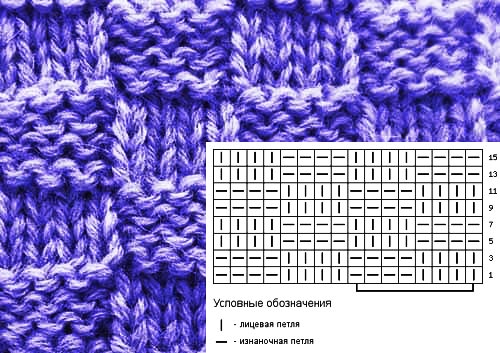
For a 2-turn scarf, you need to take measurements and determine the desired length of the product. This measurement is individual. Some people like the snood to fit tightly, while others like a loose fit.
Braided scarf
Irish motifs in the form of braids and arans are popular for knitting men's scarves and items for boys. Arans are intertwined strands of stockinette stitch on a purl background.
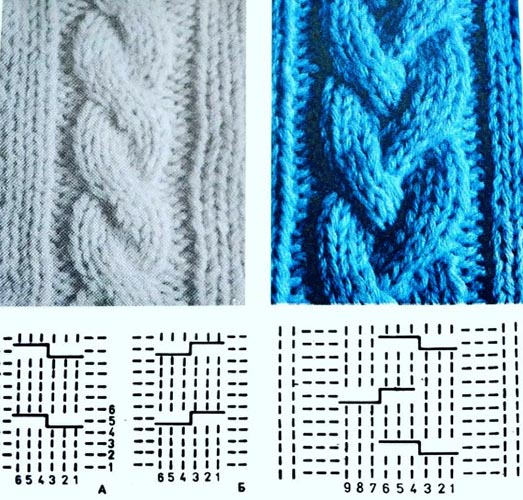
A snood for a boy can be knitted in 1 or 2 turns. Correctly selected threads and knitting needles will make the pattern more pronounced. Medium-thick mixed yarn is suitable for knitting.
To knit a snood with braids or arans, you need:
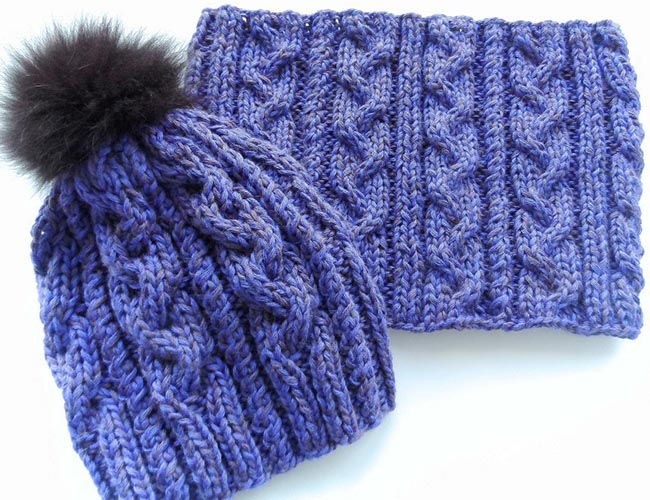
- Cast on the required number of stitches on circular knitting needles, which corresponds to the length of the product, and knit 4 cm with a 1 by 1 elastic band.
- Next, move on to the main braid pattern and knit 12-15 cm.
- After completing the main pattern, make a cuff from elastic again.
- Close the loops.
Striped one-turn pattern
To create a stylish striped snood in 1 turn, you will need the remains of semi-woolen yarn of different colors. Knitting a scarf with a simple garter stitch will take a little time.
Knitting on straight needles with turning rows consists only of front rows. In circular knitting, front and back rows alternate.
The snood can be knitted with both longitudinal and transverse stripes. The stripes can be of the same or different widths. The product can be decorated with buttons, stripes or labels.
For work you will need semi-woolen yarn with a density of 100 g per 150 m and knitting needles No. 4. The size of the scarf fabric for a 6-year-old child is 29 by 45 cm.
Knitting with warm thick yarn
If you need to quickly knit a warm scarf as a gift, the best option is to do it from thick, bulky yarn. The product will require no more than 1 skein of thread and 2-3 large buttons. The buttons will be decorative. And the collar will be fastened with sewn-on buttons.
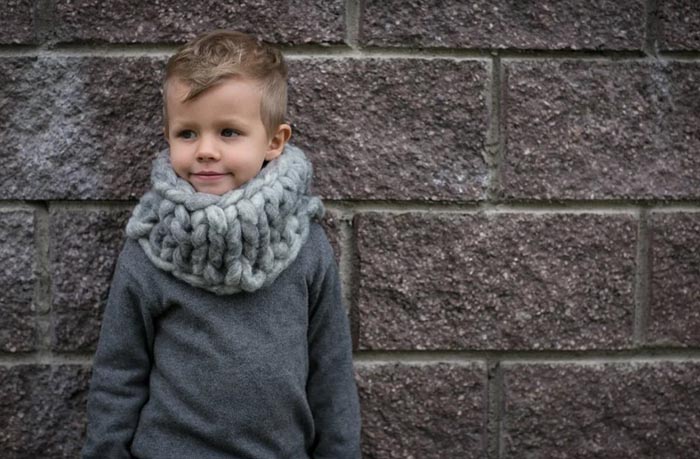
The size of the rectangular part of the collar for a 9-year-old boy is 22 cm by 70 cm.
To knit a scarf you need:
- Take wool or semi-wool threads with a density of 200 g per 117 m and thick knitting needles with a diameter of 8 mm.
- Cast on 22 stitches and knit in garter stitch for 70 cm.
- Close the loops.
- Sew buttons on the front side of one end of the scarf. Secure snaps underneath them.
How to wear?
A snood knitted with knitting needles for a boy, can be worn in different ways.
The main options for combining a men's accessory with clothing:
- As a stylish multi-layer collar. Depending on the length, the collar is laid in 1 or several rows and the folds are straightened.
- Under a jacket. Usually such a snood is of a small diameter. It creates a tight fit and protects from the wind.
- On the collar of outerwear or under the hood. The size of the scarf should be appropriate. In this form, it is more convenient to wear long collars that can be folded several times.
A knitted snood is a warm and fashionable accessory. Models for boys are knitted from smooth threads with simple patterns. The pattern for making a snood scarf looks like a rectangle.
Video about knitting a snood for a boy
Master class on knitting a snood with a rope for a boy:
